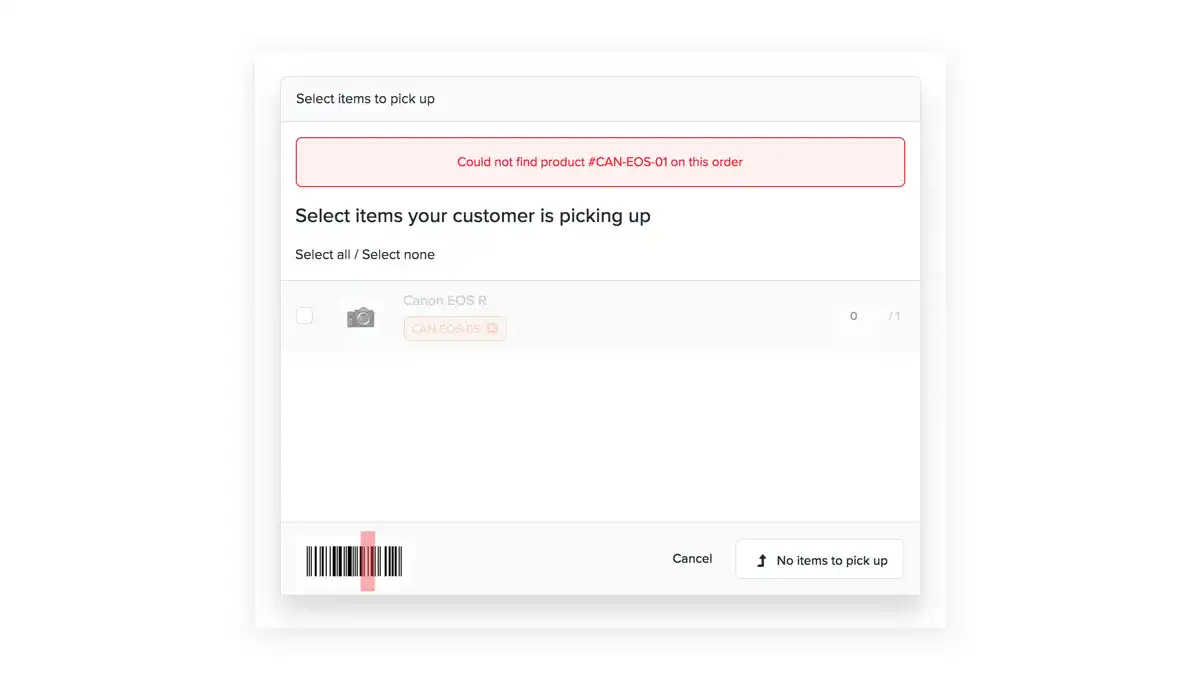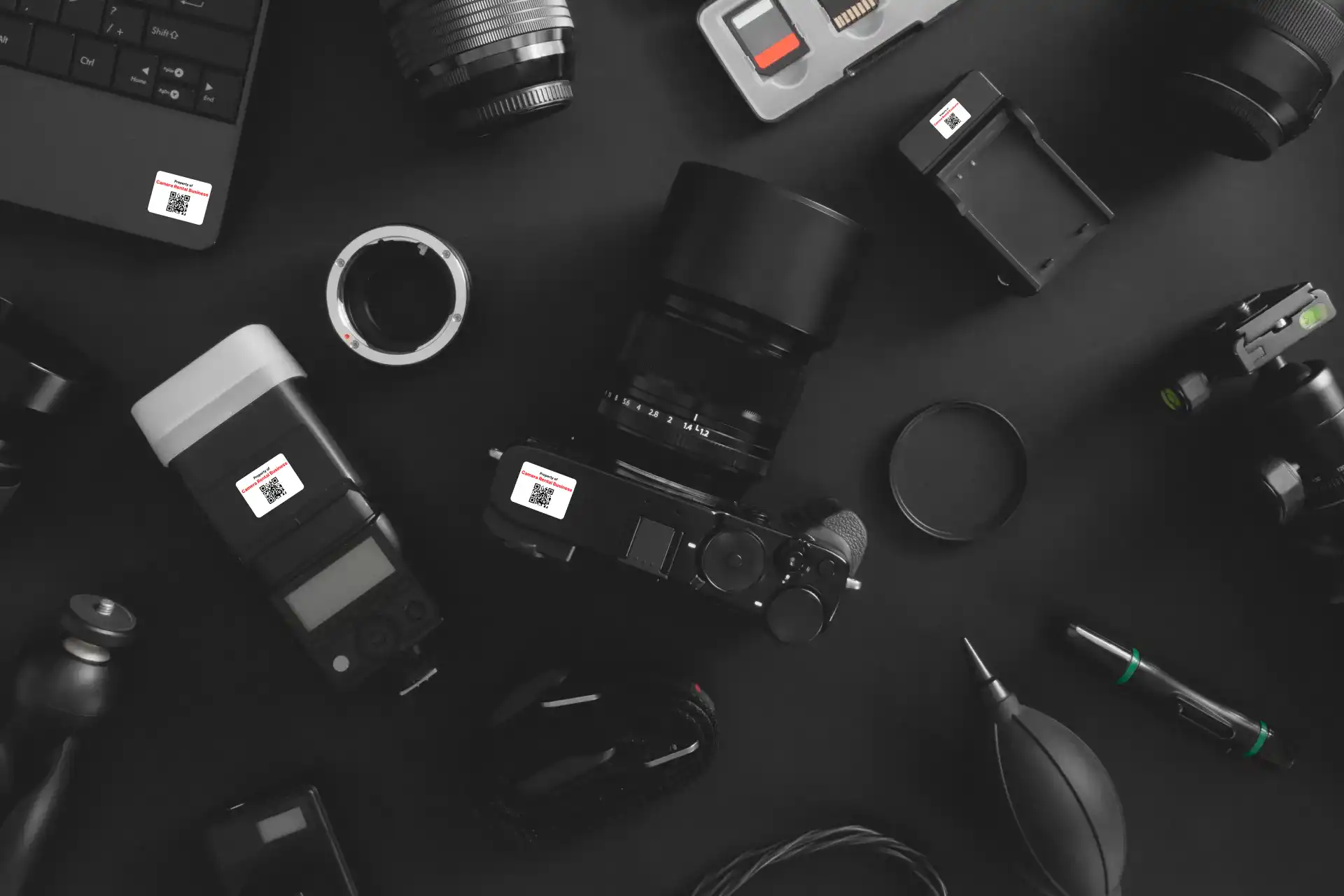Managing equipment inventory can become increasingly time-consuming as your stock levels grow. To create a successful inventory management strategy, it’s crucial to find ways to keep track of your most valuable assets. One effective method is through asset labeling. In this comprehensive guide, we will explore the concept of asset labeling, its benefits, and how it can significantly improve your inventory management workflow.
Asset labeling, also known as asset tagging, involves assigning a unique identifier to each piece of rental equipment. While many companies already use serial numbers and SKUs for inventory tracking, asset labeling adds a physical label to your products, often featuring a barcode and additional information for classification purposes.
What makes asset labeling successful?
Labeling your rental inventory has several benefits. First and foremost, asset labels help you distinguish individual stock items and indicate that a piece of equipment belongs to your business.
Combined with an external barcode scanner, they also speed up your equipment checkouts and check-ins, while also acting as a safeguard against handing out the wrong gear.
Lastly, labeling your assets makes sure there’s no ambiguity when you’re communicating with teammates about your rental equipment. Referring to “that bike we bought last summer” quickly becomes old.
Start your rental business for just $27/month
Put your toes in the water and test the demand in your area with a rental website for just $27/month.
Which assets need a label?
Before you start tagging your inventory, you need to decide which equipment needs a unique identifier. Your most valuable products are probably the best place to start, as they’re the ones most prone to theft. It’s also likely you want to track these items individually, for which you’ll need these identifiers.
Relatively inexpensive objects might require a different approach, as you might want to handle them more quickly. That’s when a single tag to define a product group would be a sensible approach. That way, you still get the benefits of labeling, without the need to track products individually. In essence, you’d only want to use labels for assets you expect back.
Tip: Asset tagging becomes even more interesting when you’re using rental management software. As you’re fulfilling orders, the software acts as a defense mechanism against handing out the wrong equipment, and reporting on specific products is mostly automated.
How do you create an asset label?
Labels have limited space, so spend some time thinking about the information you want to include. While there’s no standardized way to track rental assets, it’s best to stick to a few guidelines. When designing labels for your rental inventory, at least include the following elements:
1. Unique identifier: Each product (or product group) needs a unique identification number to differentiate them from others. Your numbering sequence should be consistent and easy to recognize by a human reader. In the end, you’re trying to make inventory management more efficient, and being able to identify your rental equipment is important.
Some organizations use a numbering sequence, while others make identifiers more distinguished by including letters. An alphanumeric identifier looks something like B02768 or C26275, but you could make them more recognizable by using abbreviations like “CA” for camera equipment and “MB” for mountain bikes.
2. Company logo: Rather than stating a piece of equipment is the property of your rental business, including your company logo helps you stand out more. Adding your logo, or at least your company name, makes people more aware of your brand and increases the chances of recovering lost and stolen rental equipment.
3. Color categorization: With so many products to manage, finding the right equipment can take a while. That’s when another element is beneficial: colors. By color coding your assets, your team can quickly sort products when customers pick up and return their gear, which accelerates checkouts and returns. They’re a win-win for both your customers and colleagues.
4. Barcodes: Barcodes are the bedrock of any efficient rental management process. As stock levels increase, manually entering information gets tiresome, and fulfilling orders becomes a slow process. Your checkout and return processes become much faster with a barcode scanner, and as a bonus, mistakes get reduced to a minimum.
Here’s a notification Booqable presents after you scan the wrong piece of equipment:

With a rough idea of what an asset label should look like, let’s examine an example tag containing all of the previously mentioned elements.

Tip: Combine barcode scanning with the right rental software, and your team can pull up relevant data and check whether they’ve gathered the right equipment in seconds.
Start with building your rental website
Every new rental business starts with a website to get their first bookings.
What type of barcode is an asset tag?
Barcodes are the most useful part of an asset label. For rentals, one symbology isn’t necessarily better than the other, although some are more concise and space-efficient. Common varieties are Code 39, Code 128, and the regular UPC and EAN barcodes you find on most retail products.
When selecting your symbology, make sure you take size into account. If you pick one that’s too small, the label might be unreadable. If you choose one that’s too big, the tag might be hard to scan from close distances. When space is limited, consider looking into Code 128, as it’s slightly more concise than Code 39. However, Code 128 requires a high-grade printer to ensure good scanning performance.
Set up barcodes with the Booqable mobile app
Barcode association is accessible in the mobile app and takes significantly less time than previously. All you have to do is stick barcodes to your products, search for them in the app, scan the barcode, and confirm that you want to link it to that product. Alternatively, if you don’t want to scan a barcode, you can enter the barcode information manually if you like.
If you don’t currently have barcodes, we recommend ordering them from a supplier who can print sequential barcodes, or you can generate barcodes online and print them yourself. You can use almost any barcode type with your products in Booqable, so you can choose which ones you use and how you want to set it up from your end.

What material is best for asset tags?
The environment in which customers use your rental equipment has the most significant impact on your asset tags. If products get exposed to the elements, you might need something durable. For indoor use, you could go with something less robust.
We recommend ordering professional-grade tags. These often last longer and offer better scanning performance than most consumer-grade label printers. We gathered three widely used materials for professional use that could work in a variety of situations.
1. Polyester tags: Polyester, polypropylene, and vinyl labels are perfect for tracking assets in indoor environments. These tags are made of a polyester base and over-laminated with a transparent film for improved durability and protection. They withstand moderate external circumstances, but they’re most suited for indoor use, which makes them a cost-effective option for furniture and computer equipment rentals.
2. Foil tags: These tags are suitable for indoor and outdoor applications. Foil tags are popular because they provide substantial durability at a relatively low cost. Because they offer excellent resistance to cold, heat, and UV light, foil labels tend to last over a decade. These qualities make them suitable for virtually any rental industry, although heavy machinery might need something more sturdy.
3. Anodized aluminum tags: Aluminum tags are designed to hold up under the toughest of conditions, making them the most durable asset tag available. The data on these labels is sealed beneath the anodic layer of the aluminum, meaning they’re resistant to anything from extreme cold and heat to chemicals, abrasives, and solvents.
Tip: Depending on the scope of your rental inventory, we recommend ordering a sample batch of barcodes before placing your final order. By getting samples, you’re able to test different materials and see what works for you. Regarding placement on your products, make sure to attach the labels to the back of your equipment.
Join thousands of rental business owners
In the last 12 months, hundreds of people have started their business with Booqable.
Asset labeling for rental equipment
Asset labeling is a powerful tool for streamlining resource management and improving overall efficiency. By assigning unique identifiers and including relevant information, businesses can easily track, locate, and maintain their assets.
Whether you choose to use barcodes, QR codes, or other labeling methods, implementing asset labeling can revolutionize your organization’s asset management processes, leading to increased productivity and reduced costs.
By investing in asset tags, you’re not just protecting your business from equipment loss and theft. Labels also make sure teammates can find the right gear faster, while at the same time reducing human error.





